What's New
Displaying results 151 - 160 of 4899
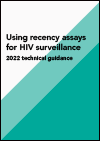
Resource | Publications,
Recency assays use one or more biomarkers to identify whether HIV infection in a person is recent (usually within a year or less) or longstanding. Recency assays have been used to estimate incidence in representative cross-sectional surveys and in epidemiological studies to better understand the patterns and distributions of new and longstanding HIV infections.
This technical guidance outlines best practices regarding the appropriate use of HIV recency assays for surveillance purposes and updates 2011 technical guidance from the World Health Organization (WHO) and the Joint United Nations Programme on HIV/AIDS (UNAIDS) on the use of HIV recency assays.
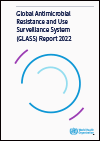
Resource | Publications,
This report marks the end of the early implementation phase of GLASS. In addition to presenting data collected through the latest data call, this report provides a summary of five years of national AMR surveillance data contributed to GLASS from its initiation, presents AMR findings in the context of progress of country participation in GLASS and in global AMR surveillance coverage and laboratory quality assurance systems at (sub)national level.
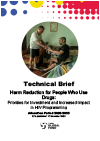
Resource | Publications,
This brief is meant to help applicants to the Global Fund plan for and scale up effective HIV and hepatitis C programming for people who use drugs, particularly those who inject. Applicants should consult the Global Fund HIV Information Note and Modular Framework Handbook, which detail the full range of biomedical, behavioral and structural interventions that the Global Fund supports as part of a comprehensive HIV response. This brief, drawing on review of past programming and guidance from UN partners, highlights specific lessons and recommendations for harm reduction programming. Closing the HIV prevention gap for key populations, including people who inject drugs, is a priority in the Global Fund’s 2023-2028 strategy. Removing human rights-related barriers to services, and ensuring that community leadership is at the heart of the HIV response, are also strategic priorities.
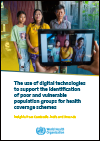
Resource | Publications,
The role of digital technologies for health financing and their potential contribution to UHC progress is receiving increased attention, although the evidence base is still very small, indicating the need for further documentation and assessments of countries’ practices. This paper seeks to contribute to gathering the evidence needed. Specifically, the paper assesses the experiences of three countries – Cambodia, India and Rwanda – to explore the use and role of digital technologies that support the identification of the poor and other vulnerable population groups. The focus is on the processes of targeting, identification and identity confirmation as important health financing-related tasks that cut across the revenue-raising and pooling functions with the purpose of providing fully- or partially subsidized coverage via publicly funded health coverage schemes.
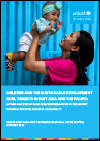
Resource | Publications,
A vigorous follow-up and appraisal system for the implementation of the 2030 Agenda for Sustainable Development requires a streamlined process of reporting the agreed framework of indicators and statistical data to monitor progress, inform policy and ensure accountability of all stakeholders. The Voluntary National Reviews (VNRs) is a testimony to each country’s continued commitment to support and implement the 2030 Agenda for Sustainable Development and its 17 Sustainable Development Goals (SDGs). It is paramount to have data available to report and monitor the progress in the SDGs of each country. UNICEF set out a regional research initiative to understand the uptake and reporting of 44 child-focused SDG indicators in the VNRs presented by the countries of East Asia and the Pacific Region. This report also analyzed the availability of data for these indicators since 2010. The report outlined the notable variation in the uptake of child-focused indicators in VNRs and data availability across various SDG areas and across countries in the EAP region by different country groupings. The report also highlighted the responsibilities and key actions required to increase the uptake as well as the data availability that the national authorities should consider in the future.
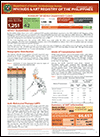
Resource | Fact Sheets,
In November 2022, there were 1,251 confirmed HIV-positive individuals reported to the HIV/AIDS & ART Registry of the Philippines (HARP) and were accounted to the total (108,428) reported cases since January 1984. Moreover, 288 (23%) of individuals reported in November had advanced HIV infection at the time of diagnosis. Forty three deaths were newly reported, bringing the total deaths this year to 919.
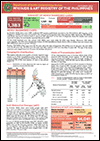
Resource | Fact Sheets,
In October 2022, there were 1,383 confirmed HIV-positive individuals reported to the HIV/AIDS & ART Registry of the Philippines (HARP) and were accounted to the total (107,177) reported cases since January 1984. Moreover, 353 (26%) of individuals reported in October had advanced HIV infection at the time of diagnosis. Sixty-five deaths were newly reported, bringing the total deaths this year to 878.

Resource | Fact Sheets,
In September 2022, there were 1,347 confirmed HIV-positive individuals reported to the HIV/AIDS & ART Registry of the Philippines (HARP). This was a 37% increase compared to the same reporting period last year (981). Three hundred fifty-five (26%) had clinical manifestations of advanced HIV infection at the time of testing.

Resource | Fact Sheets,
In August 2022, there were 1,346 confirmed HIV-positive individuals reported to the HIV/AIDS & ART Registry of the Philippines (HARP) and were accounted to the total (104,458) reported cases since January 1984. Moreover, 368 (27%) of individuals reported in August had advanced HIV infection at the time of diagnosis. Two hundred twenty deaths were newly reported, bringing the total deaths this year to 541.
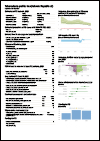
Resource | Reviews and Snapshots,
Tuberculosis profiles are generated automatically based on data reported by countries and which are held in WHO's global TB database. The document includes data for estimates of TB burden, UHC and social protection, TB/HIV care in new and relapse TB patients, drug-resistant TB care in the country.





